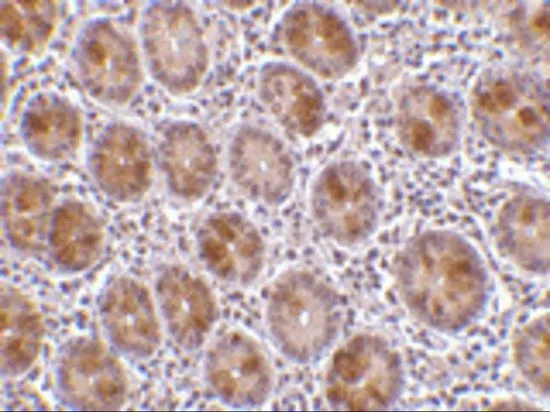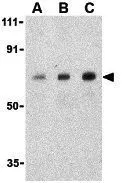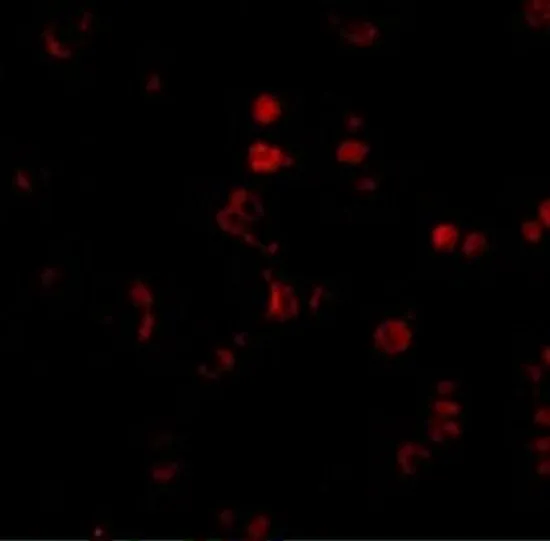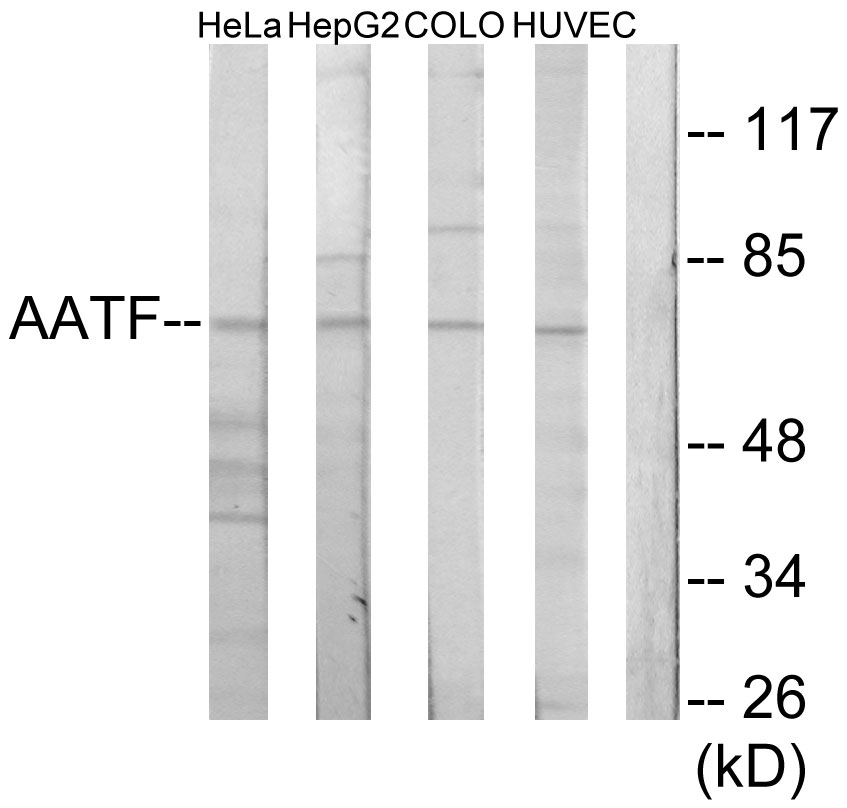
IHC-P analysis of human small intestine tissue using GTX85086 AATF antibody. Working concentration : 10 microg/ml
AATF antibody
GTX85086
ApplicationsWestern Blot, ELISA, ImmunoHistoChemistry, ImmunoHistoChemistry Paraffin
Product group Antibodies
TargetAATF
Overview
- SupplierGeneTex
- Product NameAATF antibody
- Delivery Days Customer9
- Application Supplier NoteWB: 0.5 - 2 microg/mL. IHC-P: 10 microg/mL. *Optimal dilutions/concentrations should be determined by the researcher.Not tested in other applications.
- ApplicationsWestern Blot, ELISA, ImmunoHistoChemistry, ImmunoHistoChemistry Paraffin
- CertificationResearch Use Only
- ClonalityPolyclonal
- Concentration1 mg/ml
- ConjugateUnconjugated
- Gene ID26574
- Target nameAATF
- Target descriptionapoptosis antagonizing transcription factor
- Target synonymsBFR2, CHE-1, CHE1, DED, protein AATF, rb-binding protein Che-1
- HostRabbit
- IsotypeIgG
- Protein IDQ9NY61
- Protein NameProtein AATF
- Scientific DescriptionAATF (apoptosis antagonizing transcription factor) was initially discovered as an interaction partner of ZIP kinase (ZIPK) (1), a member of death-associated protein (DAP) kinase family of pro-apoptotic serine/threonine kinases (2). AATF is a phosphoprotein containing an acidic region and a putative leucine zipper domain and nuclear localization signal, features which are typical of transcription factors. AATF inhibits the ZIPK-mediated pro-apoptotic pathway and may activate other anti-apoptotic pathways (3). Recently, it has also been shown to protect neural cells against oxidative damage induced by amyloid b-peptide and to inhibit aberrant production of the b-peptide by interacting with Par-4 (prostate apoptosis response-4), another pro-apoptotic leucine zipper protein that is associated with neuronal degeneration in Alzheimers disease (AD) (4,5), suggesting that AATF may have potential therapeutic applications in both familial and sporadic forms of AD.
- Storage Instruction-20°C or -80°C,2°C to 8°C
- UNSPSC12352203








